Welcome to the third episode in my series on paleochristian churches (from, as always, a purely secular perspective). The preceding two are about Santa Costanza and Sant’Agnese in Rome and several in Ravenna. This time I propose to show you three paleochristian churches in Umbria, two of which, despite not being in Rome, have been described as among the oldest examples to survive in Italy.
Sant’Angelo, Perugia
This church (also referred to, more correctly, as San Michele Arcangelo) lies a few hundred metres northwest of the Etruscan/Roman walls of Perugia. It sits just inside the medieval walls, but since the church dates from the fifth or sixth century, it predates those walls and would originally have been outside the town.
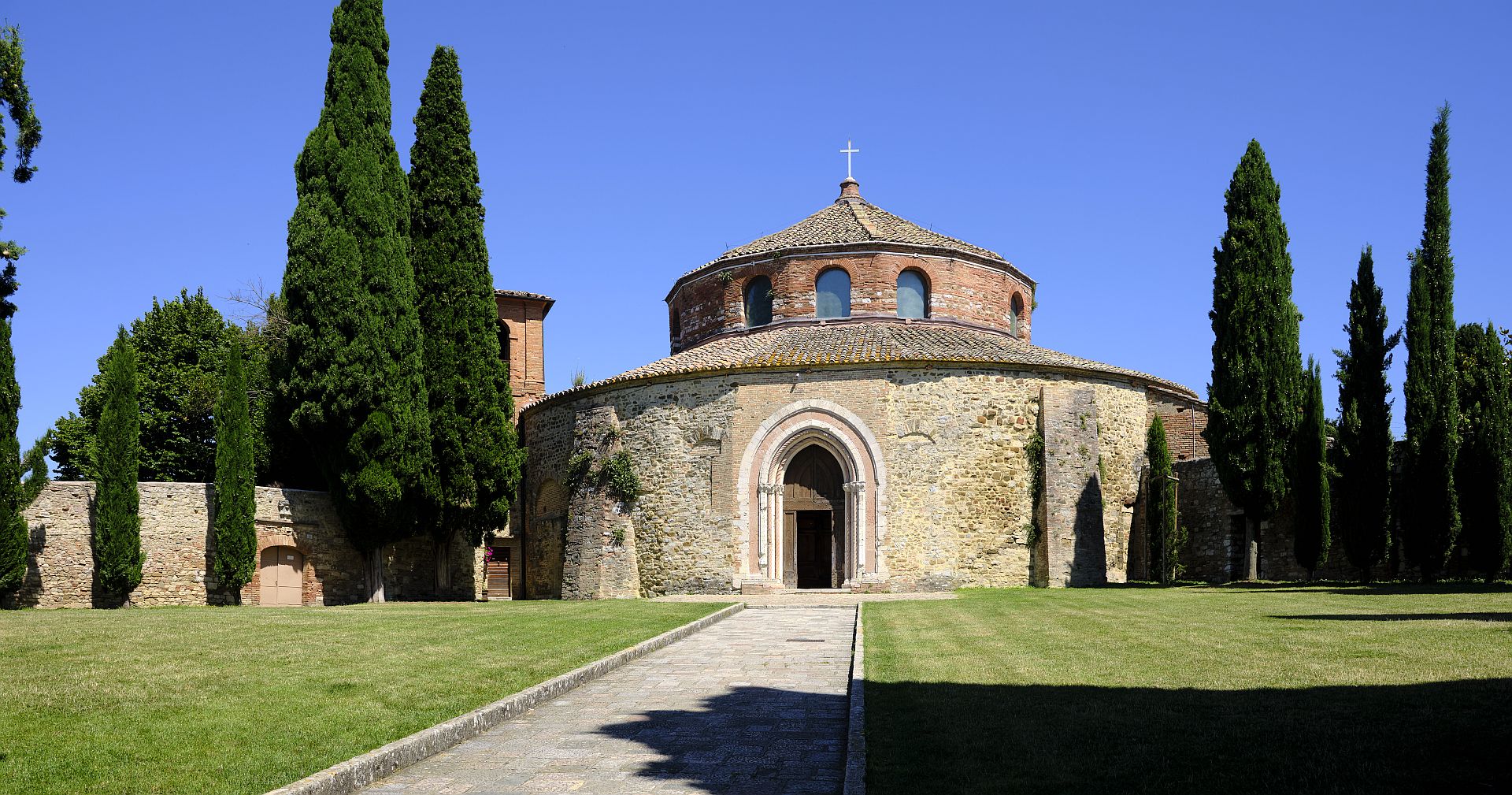
It is an easy walk up a gentle slope from the Porta Etrusca to the church, past the Università per Stranieri (university for foreigners) and passing a few Chinese restaurants on the way.
The church sits in a little park, the main users of which, the last time I was there, were sunbathing locals and their dogs. The only other visitors to the actual church were a young tourist couple, who obviously had similarly nerdy interests to mine, as we later encountered each other in the otherwise deserted archaeological museum, and exchanged conspiratorial smiles.

Depending on when in the fifth or sixth centuries it was built, the church would have seen its first use before the fall of the empire, or later during the period of Ostrogothic rule, or later still during the ruinous Gothic Wars in which the Eastern Empire sought to re-establish its rule over Italy but ended up fatally weakening that rule. Or it possibly even dates from the period of the Lombard conquest of Italy. Yes, it was a pretty busy time. If you want to read more about this tumultuous period, I recommend my posts on Ravenna at the Fall of the Empire, A Return to Ravenna, and The Lombard Invasion and the Byzantine Corridor.
The church itself, being circular, is more typical of the late Roman period than of medieval times when the cross-shaped plan became ubiquitous. In fact, with its ambulatory vault it is reminiscent of the 4th-Century Basilica of Santa Costanza in Rome, on which I wrote in the first post of this series.
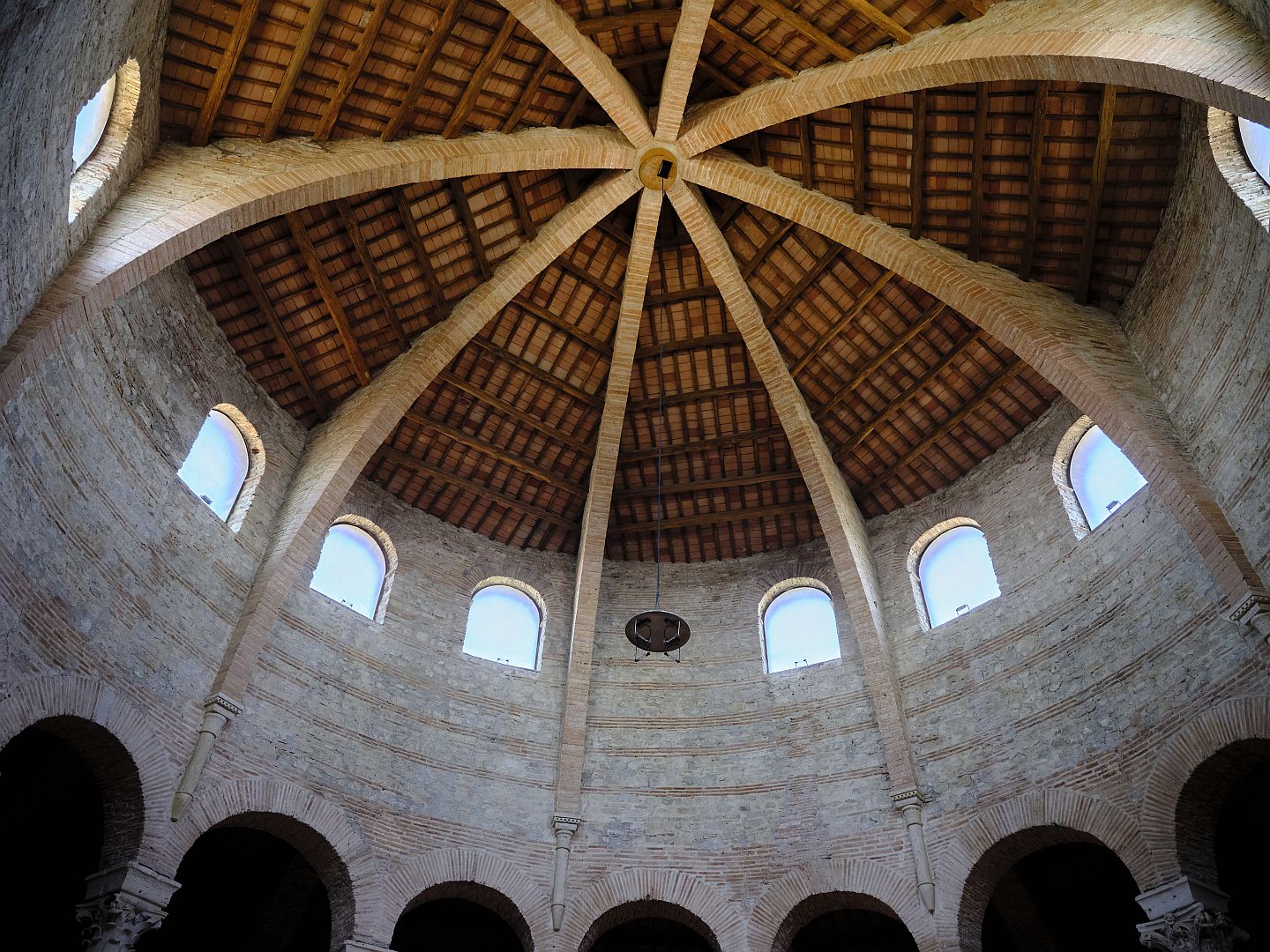
The central dome is supported on a ring of sixteen columns – one source I have says that these were scavenged from multiple Roman sites, another says they were all from the same pagan temple, possibly on the same site. While I am not an expert, it seems to me that there are too many differences in style and execution for them to have come from the same original building. But whatever their provenance they are clearly of higher-quality craftsmanship than the rest of the church.
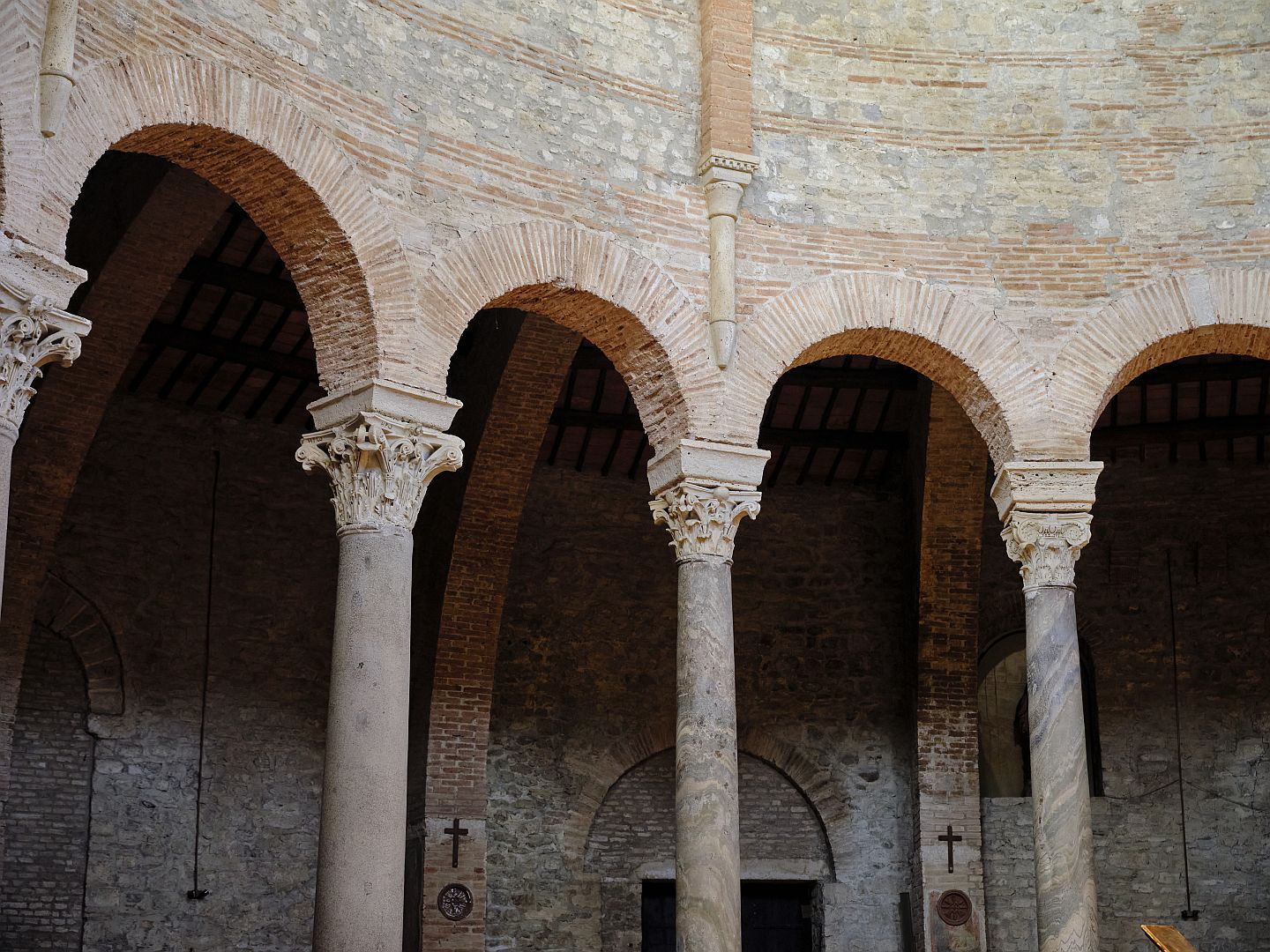
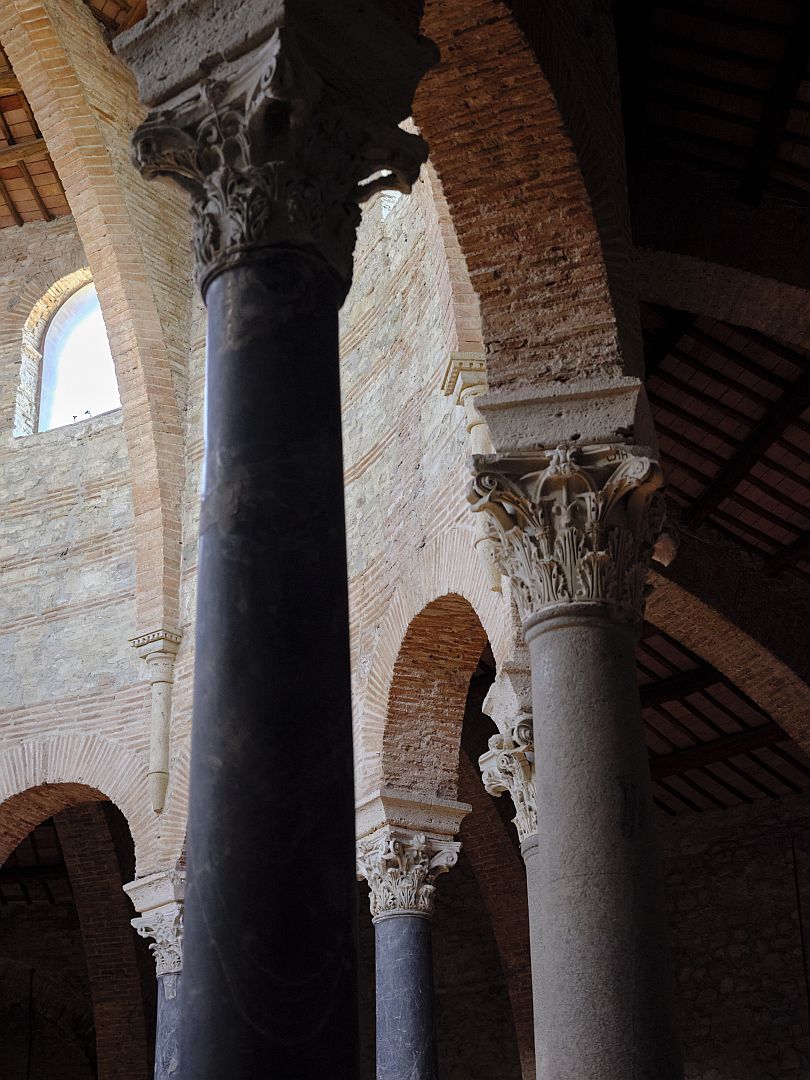
There are traces of 14th-Century frescoes on the walls – 700 years ago may seem pretty old to you and me, but when they were put there the church was already eight or nine hundred years old.
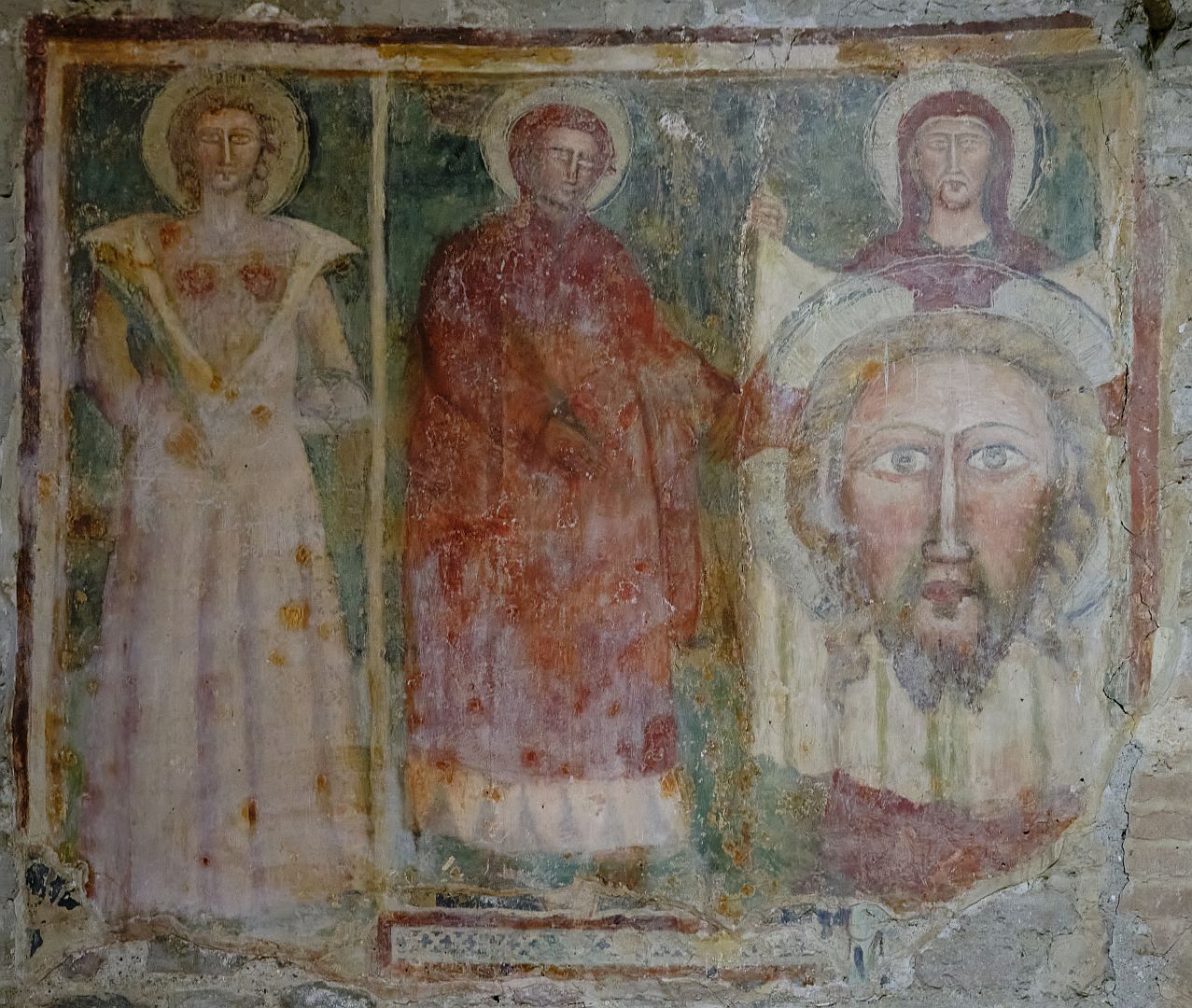
Apparently in the 15th Century, the church was converted into a small fort. I don’t know whether that would have required deconsecration, but it is certainly back in use as a church today. This may date from a restoration that occurred in the late 1940s.
San Salvatore, Spoleto
If you have read some of the related posts on this site you will know that after the Gothic Wars, the Langobards (Lombards), a displaced Germanic people, entered a weakened Italy from the north-east and quickly overran the peninsula, with the exception of Rome, Ravenna and the “Byzantine Corridor” which linked them. One of the main centres of Lombard power was the Duchy of Spoleto.
Just outside the old town of Spoleto, you will find the church of San Salvatore. At the time of writing (2023) it is unfortunately closed to allow the building to be strengthened against earthquakes. The authorities have however placed a sheet of toughened glass in the main doorway so you can peer into the interior. We previously visited there in 2015 and I took some pictures on my phone – some of those are reproduced here, and in due course I will return and take some better ones.
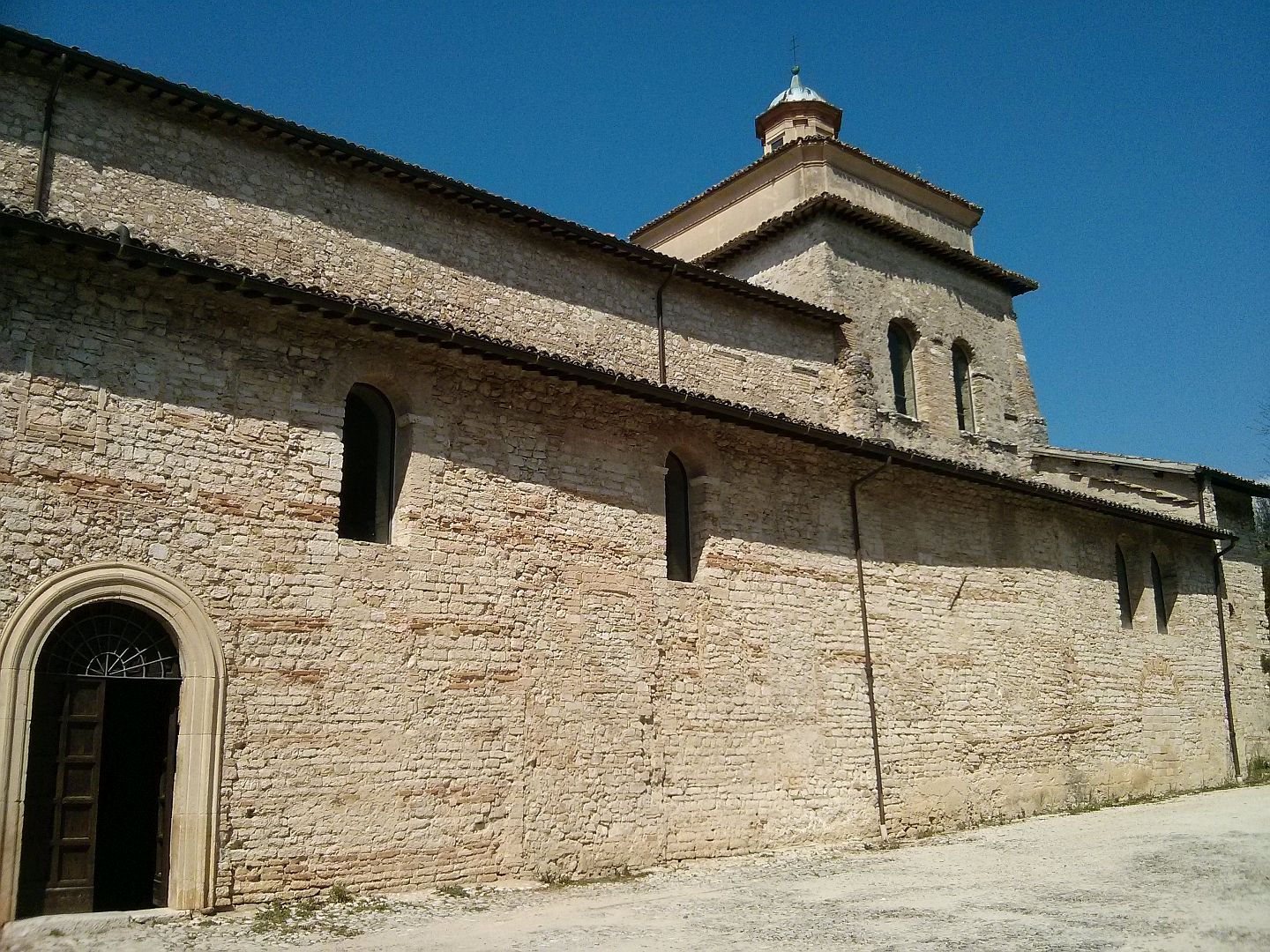
According to Professor Ian Campbell Ross in his Umbria: A Cultural Guide (Oxford, 2013), the Lombards built little in stone themselves, having only a few years before been footloose wanderers through Europe with their cattle and wagons. This makes any survivals from their period all the more precious. Also according to Ross, the date of the original church on this site (and how much of that original remains) is the subject of scholarly dispute, but it may have been as early as the 4th Century, well before the fall of the Empire and the arrival of the Lombards.
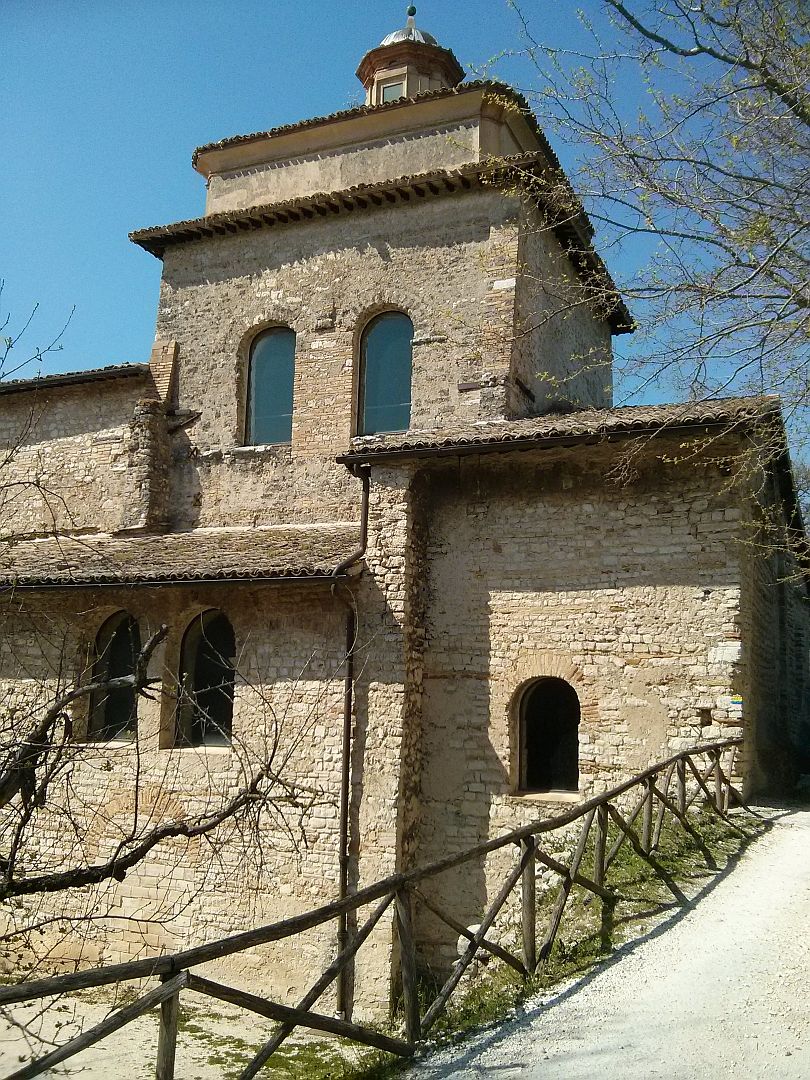
What is not disputed is that the Lombards rebuilt or renovated the church in the 8th Century, and also that the internal structure makes use of columns and architraves that were originally part of Roman temples. Whether these were incorporated in the original building, or during the renovations, is I believe unknown. My dilettante observation is that at least some of the columns appear to be load-bearing, in which case they are integral to the building’s structure. So if they were incorporated in the 8th Century, then it must have been a complete rebuild. If it was only a renovation, then they may date from earlier and have been part of the original building.
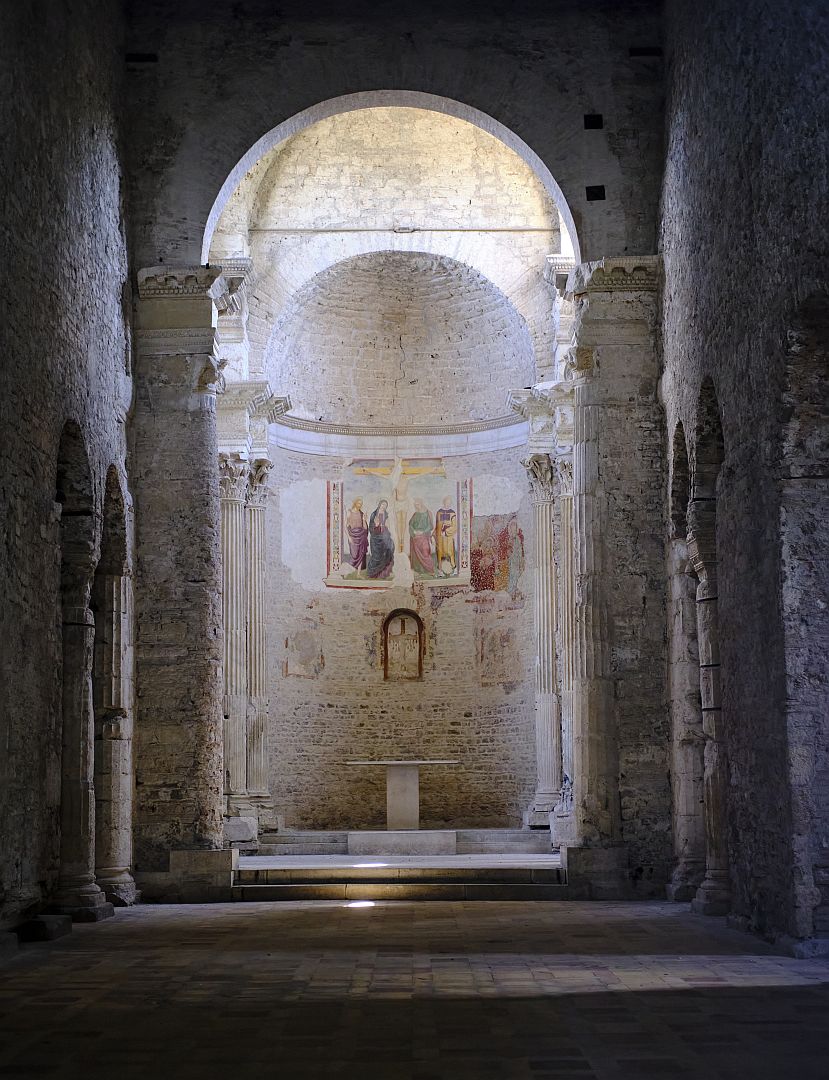
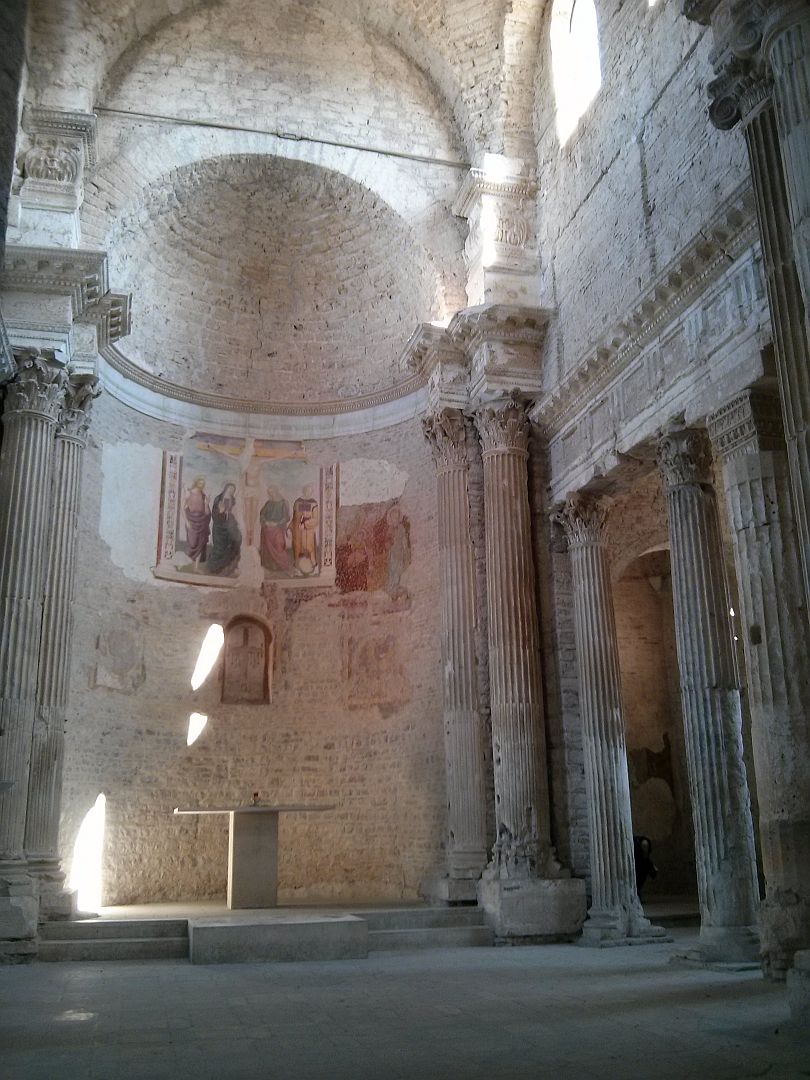
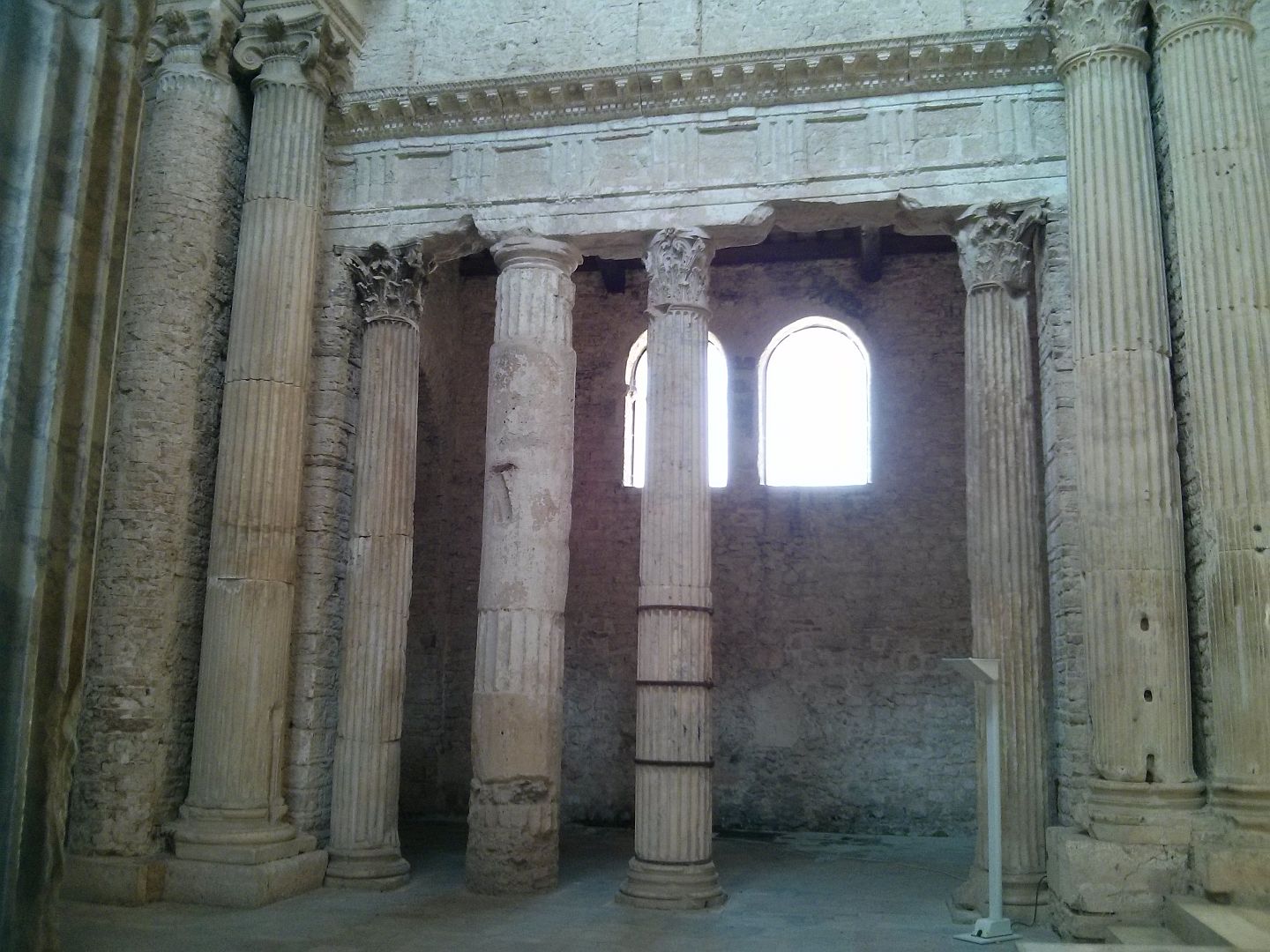
Roman remnants are also incorporated in the façade – since this is not integral to the main structure they could definitely have been added at the time of the Lombard renovation in the 700s.
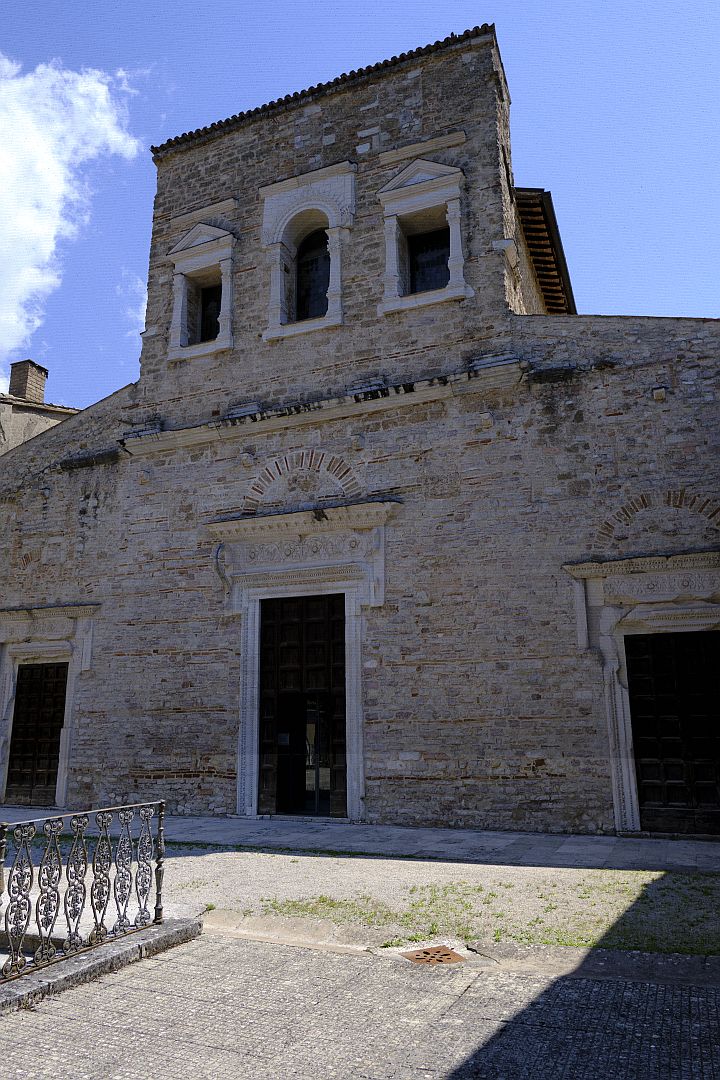
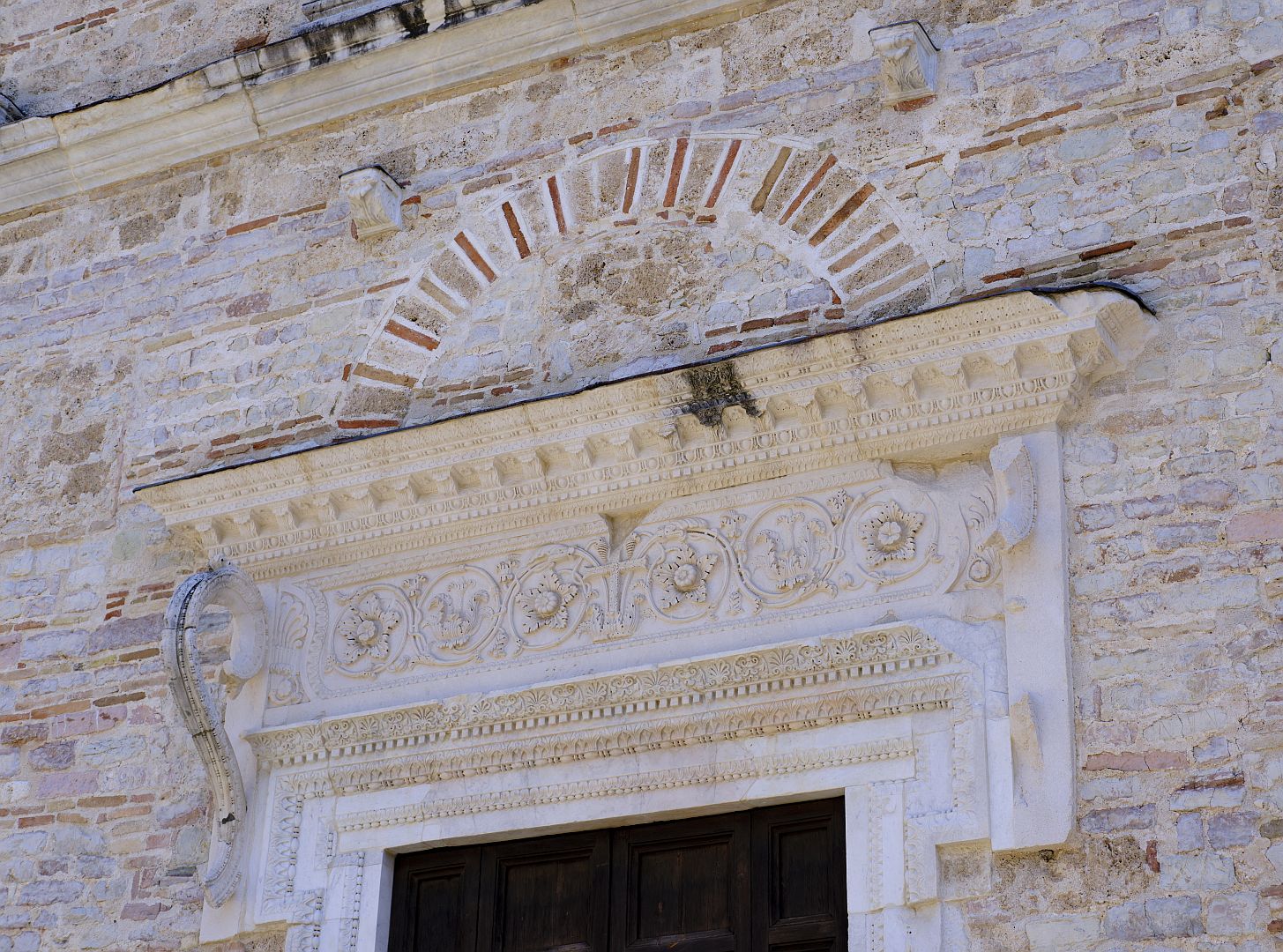
These days San Salvatore is the chapel of the municipal cemetery; by definition a quiet and reflective place. It seems that over the course of the 20th Century a series of restorations removed various internal baroque accretions and restored the dignity and austerity of the original, for which we must be grateful.
The Little Temple of Clitumnus
Let us finish with what is probably the oldest of these three examples. The Tempietto sul Clitunno is truly a remarkable survival, located near the Springs of Clitumnus (Fonti di Clitunno). That name would ring a bell to classically-minded readers, and also to others perhaps, as it crops up in later literature.
These days Clitunno is the name given to a little river that runs south through the Valle Umbra, one of several which, since the medieval draining of the valley, run in largely artificial channels. In ancient times though, Clitumnus was a river god whose shrine was located where a series of springs burst forth from the base of the hills. It was apparently a very sacred and beautiful place, where the cold, clear and pure waters were used to purify the white oxen being prepared for sacrifice. The poets Propertius and Virgil celebrated it in verse, and Pliny the Younger wrote an extensive description in one of his many letters. Later, Byron devoted several lines of Childe Harold’s Pilgrimage to it, in which – not untypically – he manages to work in a reference to a naked nymph.

Nowadays the fame of the springs, at least among Italians, is due to their having been the subject of a 19th-Century poem by the nationalist poet Giosuè Carducci in which he hails “green Umbria”, (although he never called it the “green heart of Italy”, as the poem is universally misquoted in tourism material).
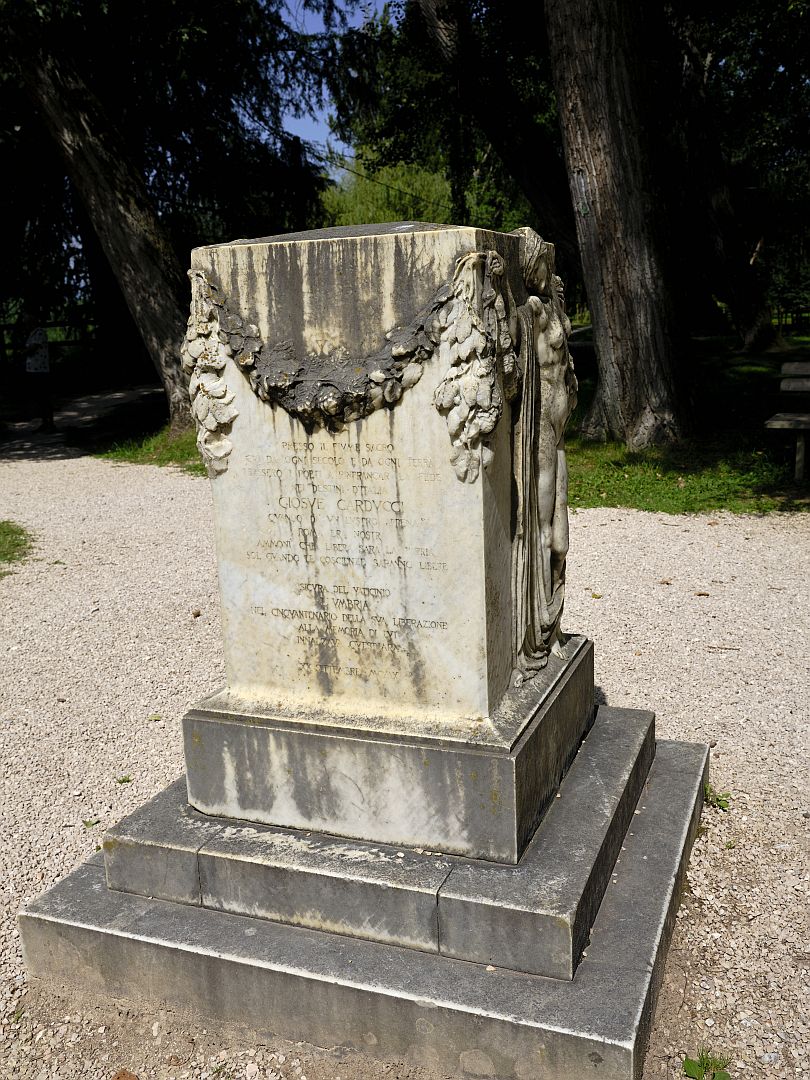
And it must be said that it is hard to feel any echoes of ancient sanctity as the place now has the feel of a pleasant urban park, accentuated by the main road running past and the mothers with young children who know that the cold spring waters cool the air and make it an excellent place to come and stroll on a hot day. The poplar trees described by Pliny have been replaced by willows. Perhaps early on a misty autumn morning the atmosphere might be more evocative.
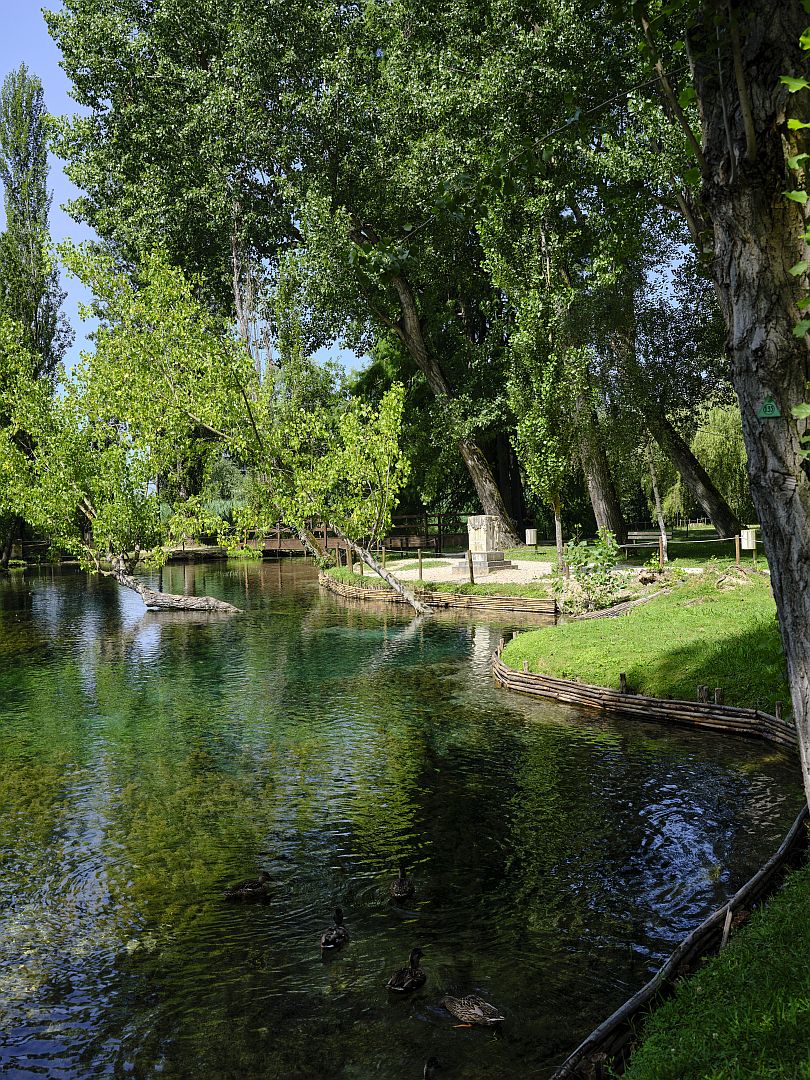
A few hundred metres up the road is a small building built on classical lines, the tempietto or little temple. For a long time it was misidentified as one of the ancient temples and shrines mentioned by Pliny, but it is quite far away from the springs, and in any case even a superficial examination reveals it to be a coarsely-built late Roman structure incorporating parts scavenged from earlier Roman temples. I have seen suggestions that those parts came from the original precinct of Clitumnus, and it seems plausible – why carry such things any further than you need to?
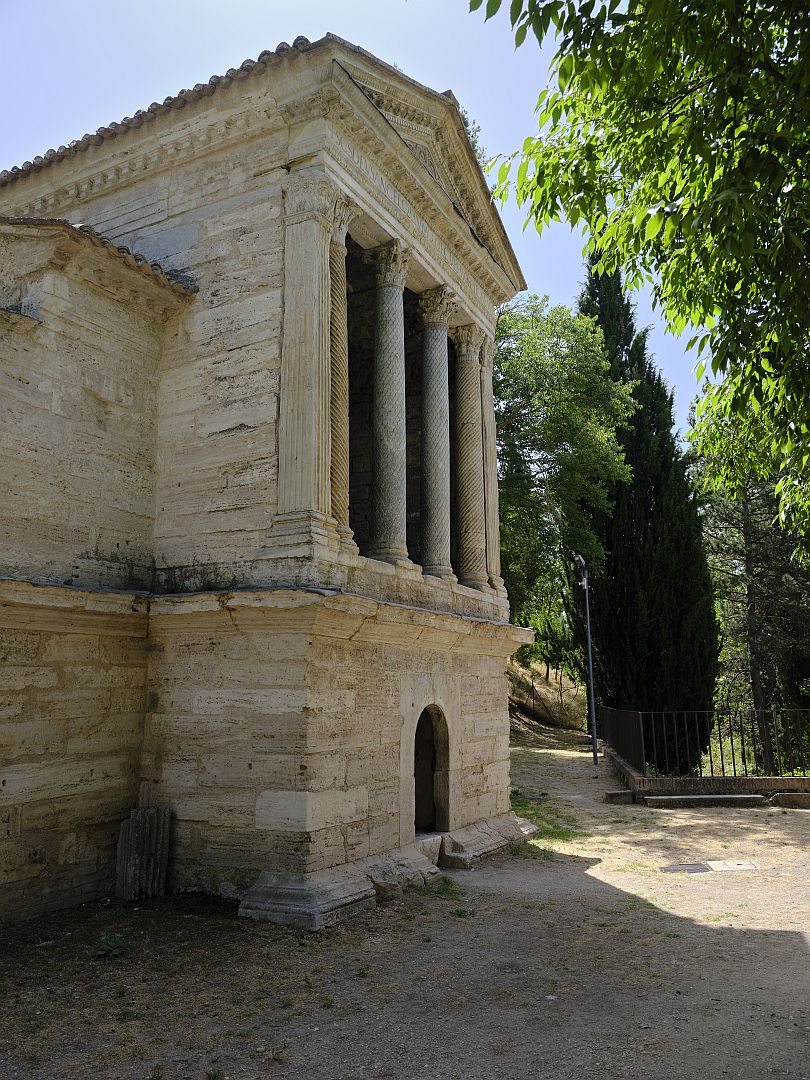
So it was probably never a pagan temple, having been built as a Christian church. But to me this pretty little building is almost as interesting as an actual pagan temple, not least because it is not really all that much newer than a pagan temple would be. The central part, a barrel-vaulted chapel, dates from the late 4th Century, which makes it seriously old, a hundred years or so before the traditional date of the fall of the western Empire.
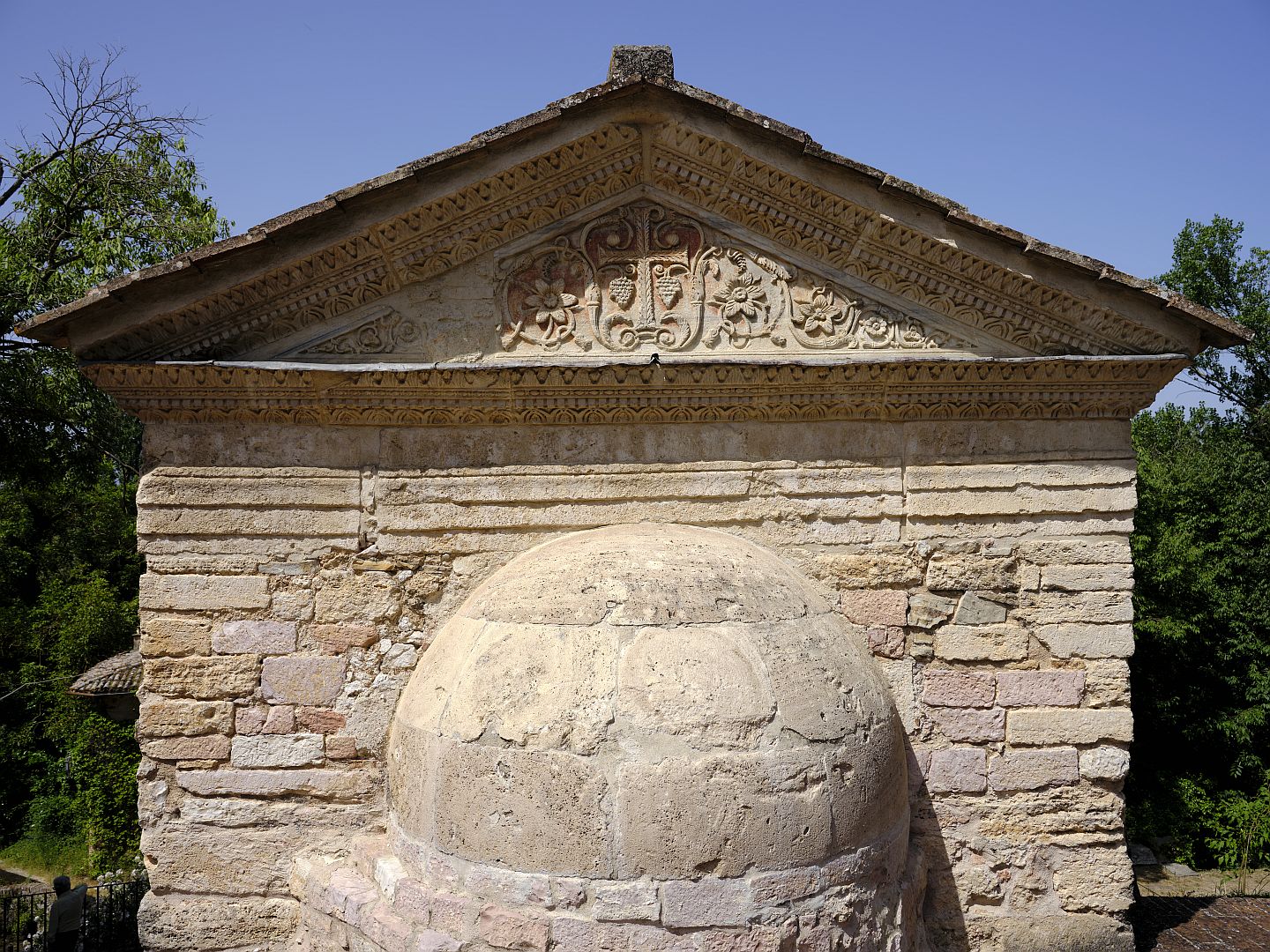
A couple of hundred years later, a façade assembled from the scavenged Roman material was added, giving it the appearance it retains today. This was during the period of Lombard rule, leading to the tempietto having been declared part of a series of UNESCO sites in Italy associated with the Lombards (San Salvatore in Spoleto, above, is another).
According to the information displayed at the site, the outer pairs of columns are from the Imperial era (2nd Century AD) while the inner pair and the tympanum – the triangular bit – are from the Augustan era (1st Century AD).
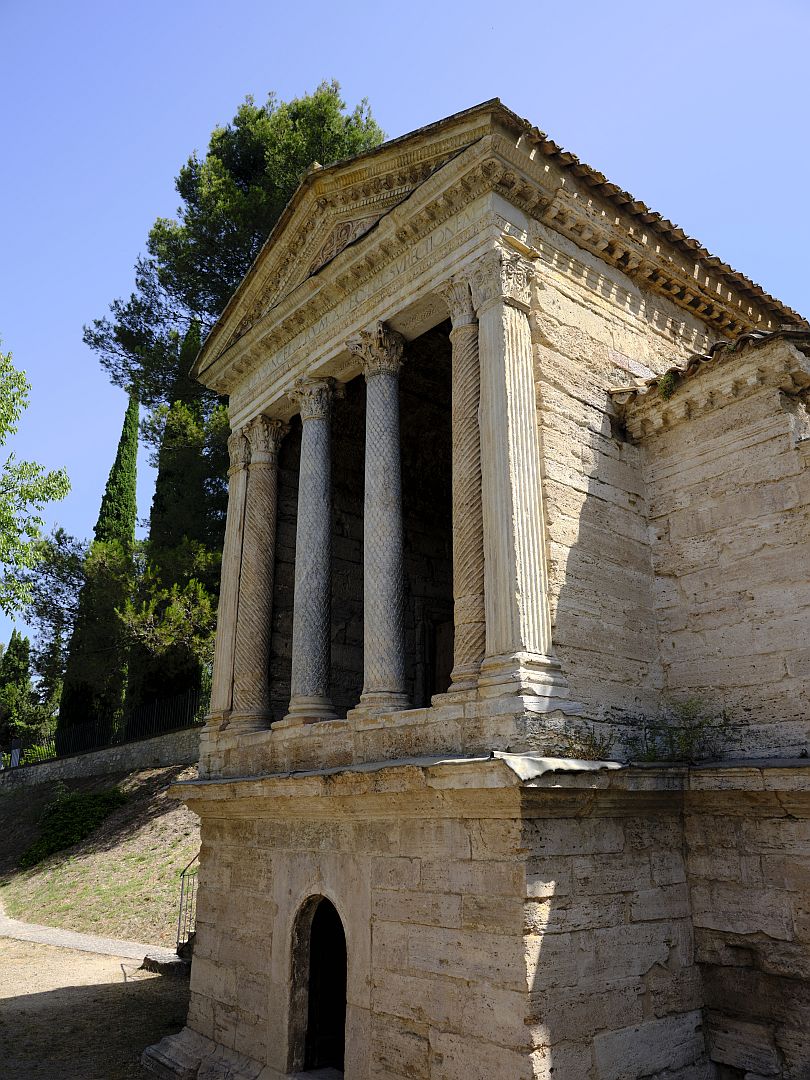
In the picture below you can see how the finer work of the re-used earlier Roman elements contrasts with the rougher work of the late-imperial building, particularly where the decoration under the eaves continues around from the front to the side.
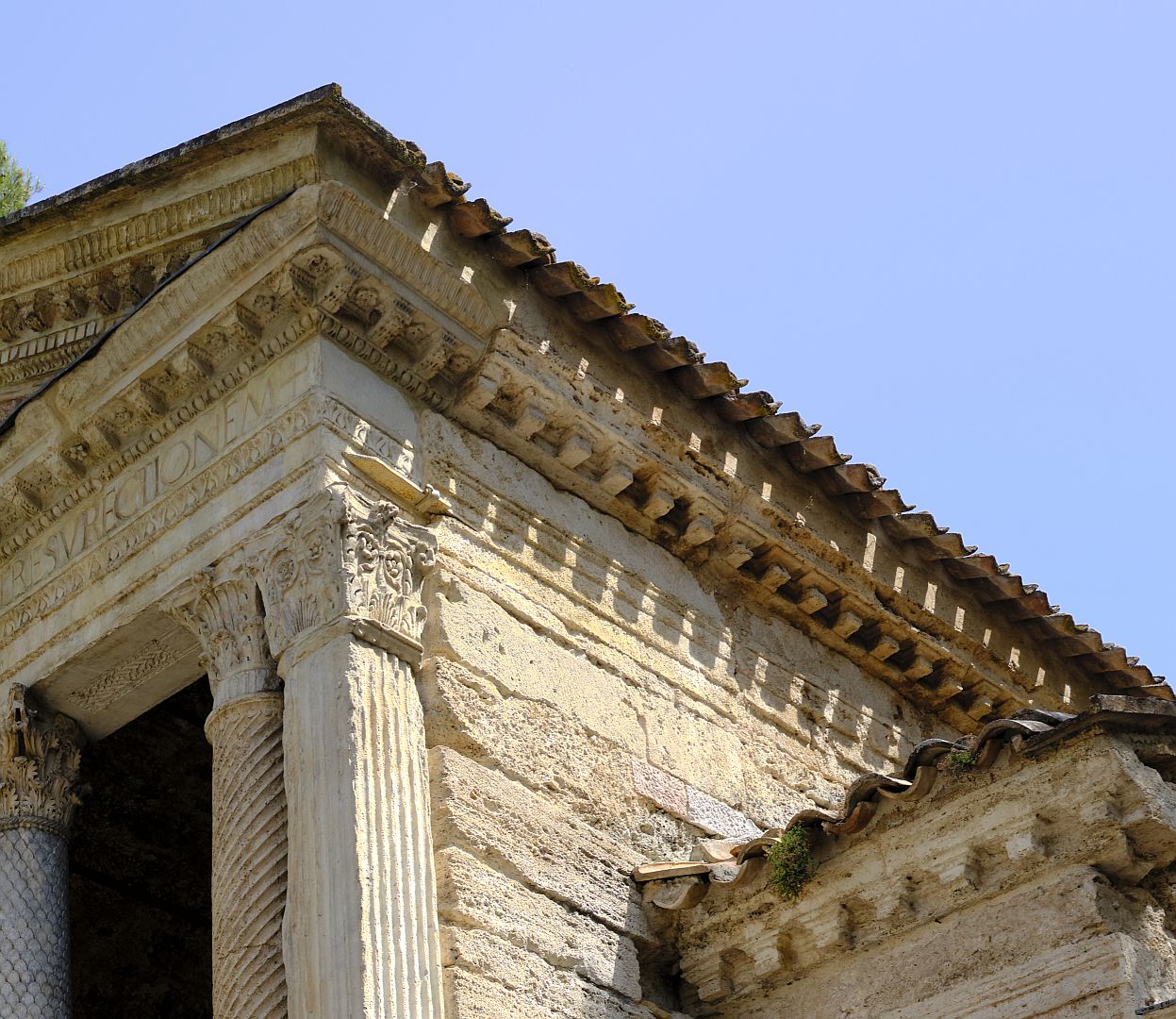
Inside, in the apse behind the altar, there are frescoes of Christ and Saints Peter and Paul that have been dated to the 8th Century, so they are pretty damn old really, despite being four hundred years younger than the building itself.
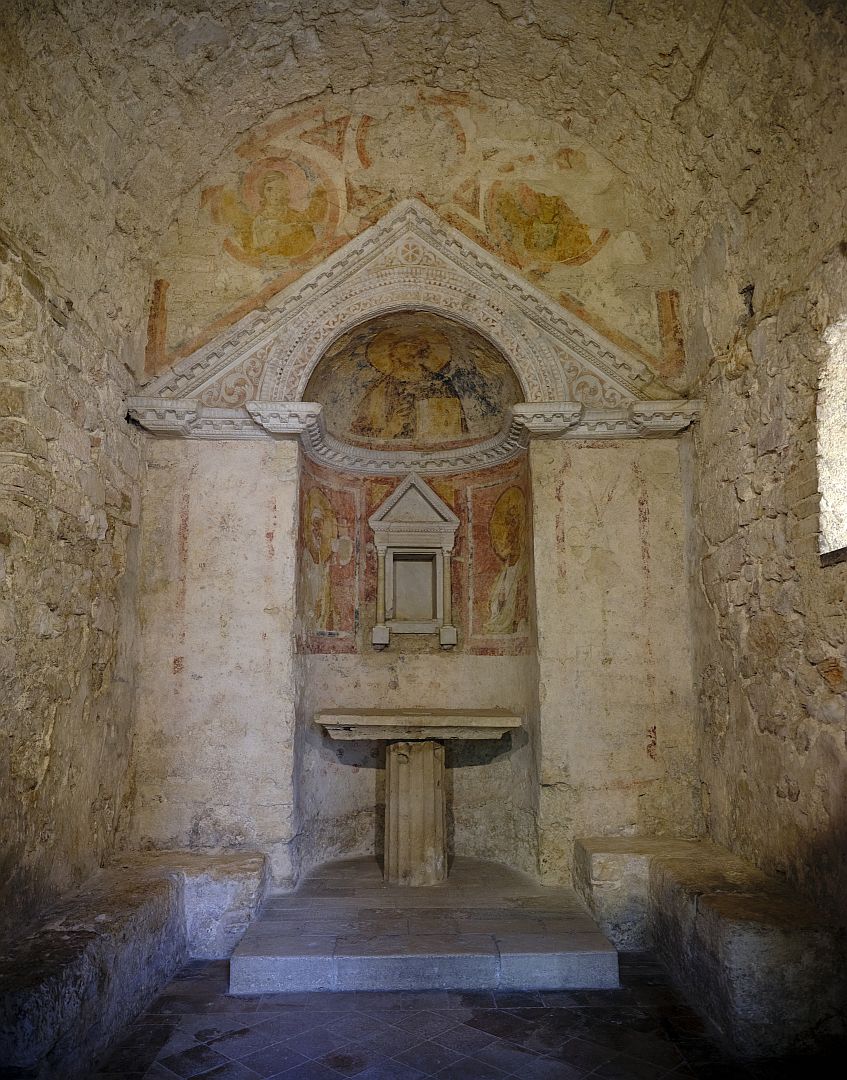
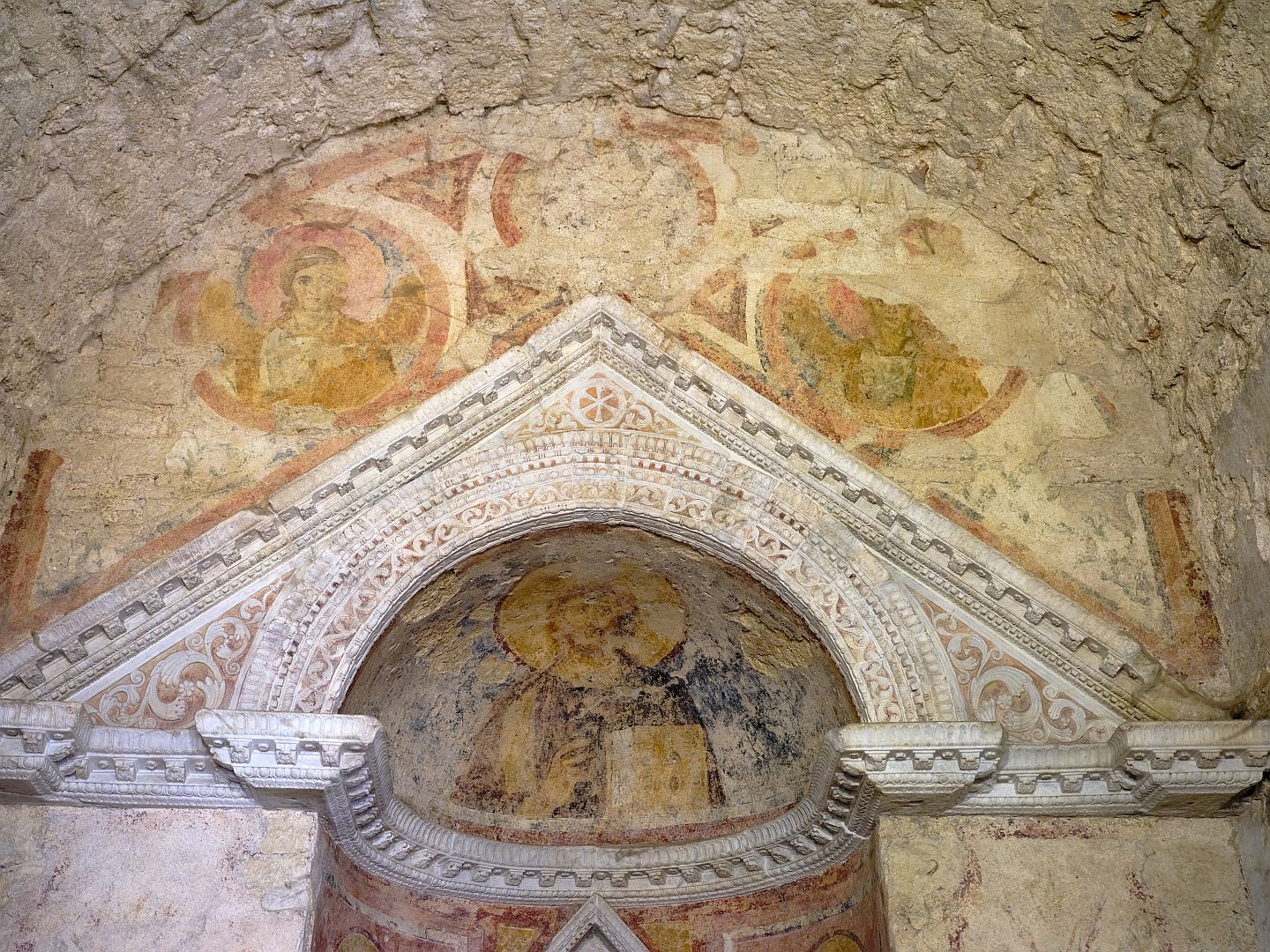
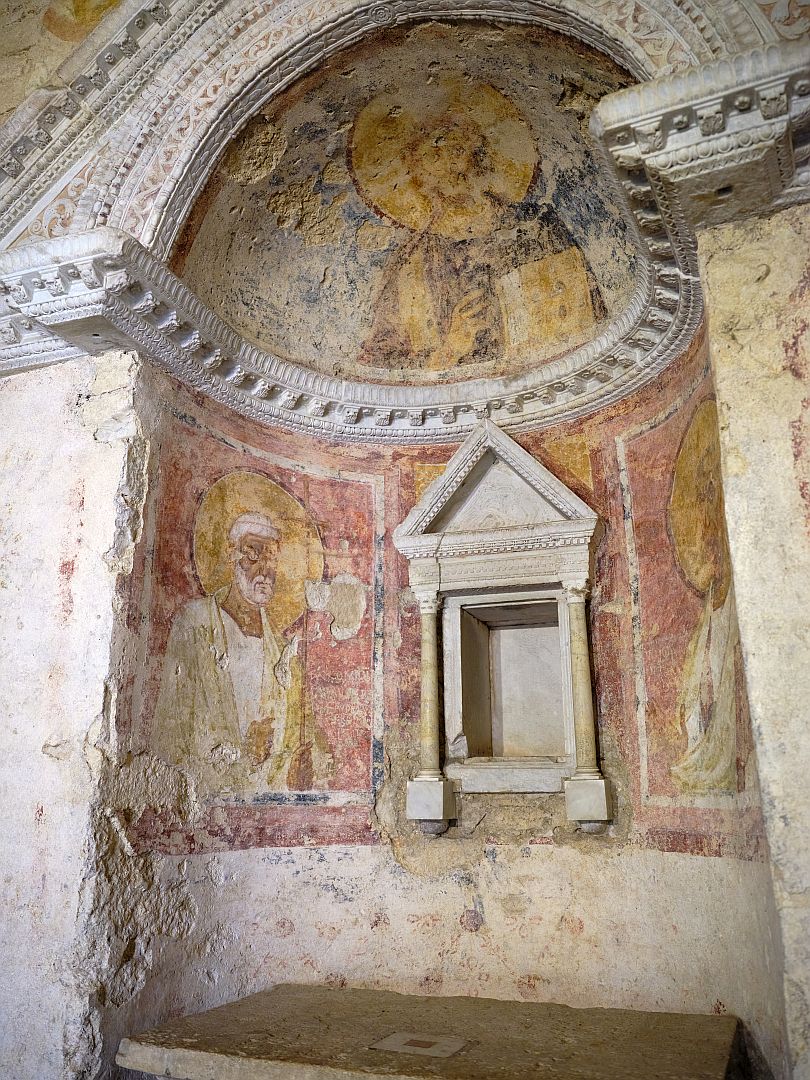
_____________________
As I said in the first in this series of articles, one of the attractions of these buildings is the sheer implausibility of their survival – from wars, earthquakes, misguided redecorations or simply falling apart through old age. All three of these Umbrian churches are miraculous in that way; and all three snooze away in their respective settings – Sant’Angelo on the edge of Perugia, in its park with the sunbathers and dog walkers, San Salvatore in Spoleto’s municipal cemetery, and the tempietto nestled inconspicuously beside the main road from Spoleto to Assisi. Go there and lay your hands on the stones – and touch history.
